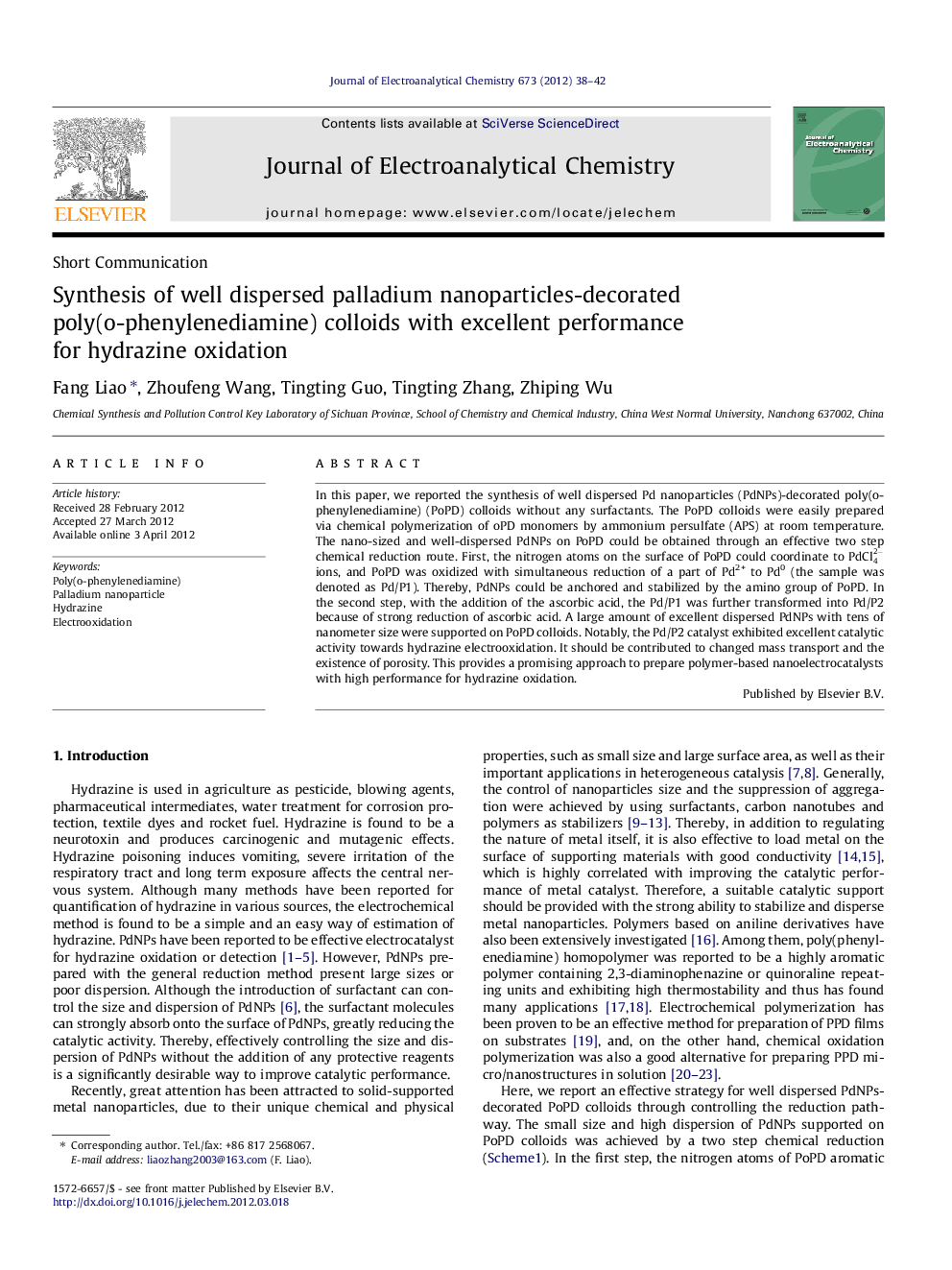| Article ID | Journal | Published Year | Pages | File Type |
|---|---|---|---|---|
| 219322 | Journal of Electroanalytical Chemistry | 2012 | 5 Pages |
In this paper, we reported the synthesis of well dispersed Pd nanoparticles (PdNPs)-decorated poly(o-phenylenediamine) (PoPD) colloids without any surfactants. The PoPD colloids were easily prepared via chemical polymerization of oPD monomers by ammonium persulfate (APS) at room temperature. The nano-sized and well-dispersed PdNPs on PoPD could be obtained through an effective two step chemical reduction route. First, the nitrogen atoms on the surface of PoPD could coordinate to PdCl42- ions, and PoPD was oxidized with simultaneous reduction of a part of Pd2+ to Pd0 (the sample was denoted as Pd/P1). Thereby, PdNPs could be anchored and stabilized by the amino group of PoPD. In the second step, with the addition of the ascorbic acid, the Pd/P1 was further transformed into Pd/P2 because of strong reduction of ascorbic acid. A large amount of excellent dispersed PdNPs with tens of nanometer size were supported on PoPD colloids. Notably, the Pd/P2 catalyst exhibited excellent catalytic activity towards hydrazine electrooxidation. It should be contributed to changed mass transport and the existence of porosity. This provides a promising approach to prepare polymer-based nanoelectrocatalysts with high performance for hydrazine oxidation.
► The PoPD submicrospheres were easily prepared via chemical polymerization. ► PdNPs on PoPD could be obtained through an effective two step chemical reduction route. ► Pd/P2 catalyst exhibited excellent catalytic activity towards hydrazine electrooxidation.
